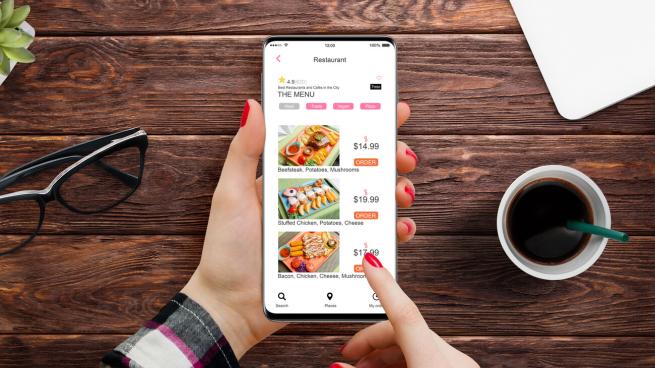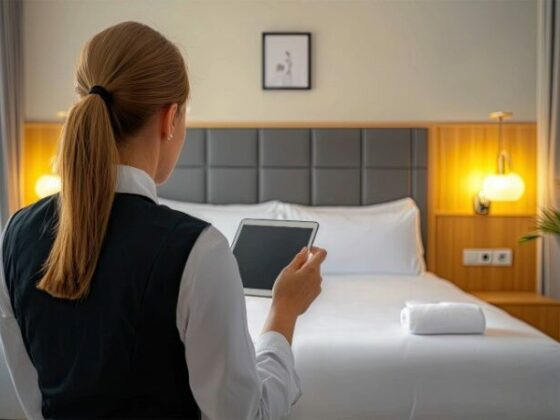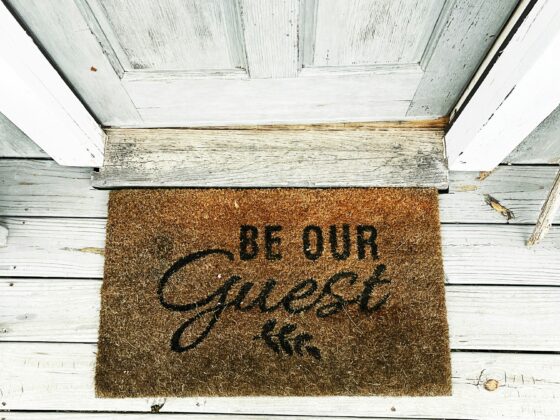
Running a restaurant is challenging, involving tasks such as staff coordination, menu updates, stock management, and ensuring excellent customer service – it’s a full-time job that never stops. Yet, many restaurateurs still find the digitalization process daunting and miss out on the benefits of introducing a reservation system app.
A restaurant reservation system is software designed to help both diners and restaurateurs manage bookings efficiently. Diners can use it to reserve tables at their favorite restaurants or bars, while restaurateurs can utilize it to organize their reservations and track guest arrivals.
So why should you introduce a restaurant reservation system?
Well, this depends on the scale of a business. For a small business, introducing a restaurant reservation system helps attract more customers, ultimately helping level the playing field for smaller establishments which often lack the marketing budgets that larger chains have. For medium to large businesses, these systems streamline operations, reduce no-shows, and enhance customer satisfaction, leading to increased profitability and improved brand loyalty.
Convenience is another key factor in utilizing a reservation system. Many existing restaurant booking systems are web-based and not optimized for mobile devices, whereas an app can streamline the process, making it quicker and more user-friendly. Additionally, the reservation app can store user details, allowing repeat customers to save time, reducing the friction of the booking process and making it easier for consumers to book.
This brings us on to accessibility: an app can make it easier for customers to access restaurant services, including booking tables, ordering takeout, or viewing menus, all from their mobile devices. For customers with accessibility needs this is a game changer, instead of physically having to visit the restaurant for appropriate availability such as wheelchair accessibility, disabled toilets etc., they can view this all within their booking via the app.
A reservation app is a prime way to add custom features such as special promotions, loyalty rewards, event bookings, and more, which are not always possible through generic marketplace platforms. It ultimately allows you to build long-lasting relationships with your customers and keep them coming back!
Lastly, there is money to be made in this industry, so from a financial perspective, it’s worth it. Marketplaces are great for building up brand awareness, but in return they take a percentage fee. While restaurants should always have a presence on these sites, developing a singular app allows owners to almost steal their customers back through a direct route – all the while reaping the benefits of using the current marketplaces to boost brand awareness.
In summary, a restaurant reservation app offers significant advantages by improving operational efficiency, enhancing customer experience, and providing financial benefits through direct bookings and reduced service fees.
How do I develop a restaurant reservation system app?
1. You need to do your market research. Analyze your competitors and their apps to identify gaps and opportunities that you can implement. By doing so, you will differentiate your app and stand out from the crowd. Here’s a tip, finding an app development service that can integrate with an EPOS system is a great way to build a competitive advantage.
2. When planning your app, design is key, if you want people regularly using your app it needs to be both easy on the eye and user-friendly. A restaurant reservation system is no different, except unlike most other apps, it’s mainly data driven. Consider using online app builders for easy, pre-packaged design options that balance functionality and aesthetics.
3. Once you’re ready to build the app and depending on the functionality you want, you may be better off using an app builder. The pre-packaged app system works on a drag and drop basis and is exceptionally easy to use. No coding experience is required; however, if you want your reservation system to have dual-functionality or some more unique features, you may need to speak to a developer directly to hard-code in the aspects you want.
4. After your app model has been tested and accepted onto the app stores, it’s time to launch. When doing so, be sure to leverage your market research to promote your app and attract initial users.
ABOUT THE AUTHOR
Rohan, based in London, is the SVP of Engineering at Builder.ai, a platform that allows people to bring their app idea to life








